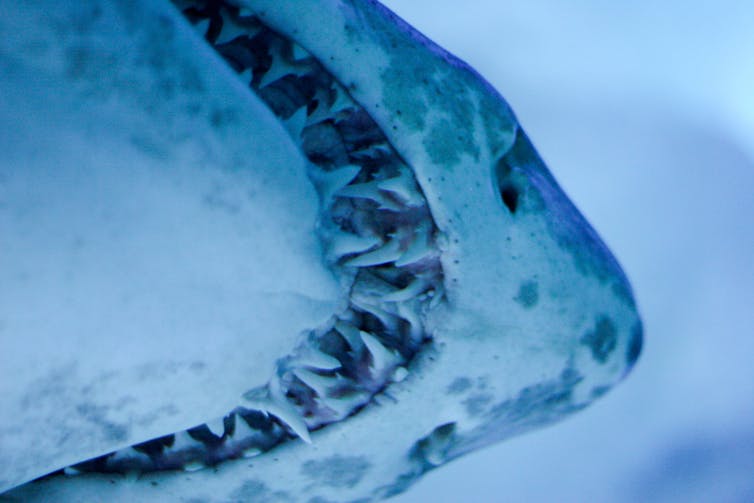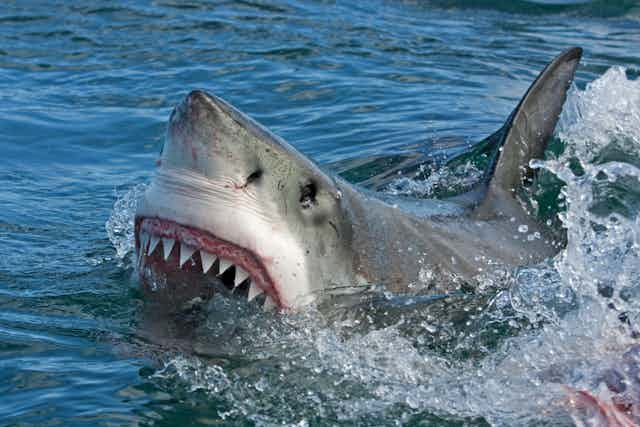Sharks are the ultimate predators of the aquatic realm thanks to one character in particular – teeth. Not only are shark’s teeth razor sharp but they are also constantly regrown throughout life, gradually replaced like a conveyor belt of rows of teeth, and not just when they are worn down or fall out.
This is in stark contrast to humans, who only develop two sets of teeth in their lives (milk and adult). This was fine when we only lived for a few decades and ate foraged food. But with modern medicine greatly extending our lives and our diets much more abrasive and acidic, these two sets are often not enough meaning we need invasive ceramic implants or impractical dentures. So what if we could find out the genetic basis for shark’s ability to regrow their teeth and use it to develop novel methods of growing new, natural teeth in humans?
Sharks don’t actually regrow teeth one by one but have multiple rows inside their jaw that are constantly regrown. When a tooth on the edge of the jaw drops out, the corresponding tooth in the row behind it moves forward to replace it. The underlying soft tissues anchor and carry each tooth like a conveyor belt.
When juvenile sharks emerge from their egg cases or their mothers’ wombs (sharks can be born either way), they have a fully developed conveyor-belt set of teeth (dentition), with rows of sharp teeth ready for feeding.

My colleagues and I recently studied the key genes involved in tooth regeneration in a small species of shark known as the catshark (Scyliorhinus canicula). Its eggs can easily be collected and the embryos inside can be raised to show us the precise set of developmental stages that tooth formation and regeneration goes through.
We found that within the epithelial cells that line sharks’ mouths there are special compartments of stem cells that are key to the their continuous tooth regrowth.
Without these stem cells, the sharks would suffer like humans with only a restricted set of teeth, which would in turn affect their success as hunters at the top of the food chain. We analysed the stem cell compartments in shark’s mouths and deciphered all the active genes involved in shark tooth development and regeneration.
Restoring tooth growth
All vertebrate teeth, from sharks to mammals, are incredibly similar. For one thing, their structure is always composed of a hard mineral tissue known as dentine that is covered with even harder enamel or a similar material. But we have also found that the genes that control the process of tooth development are also very similar.
This is important because it suggests that the key genetic information that we discover in sharks could be crucial to understanding how tooth regeneration works and how that process is prevented in humans.

The next phase of the research is to compare the shark tooth genetic signature to the human one to find out if sharks have some genes that are inactive in humans. That might offer clues to the mechanism of our lost regenerative ability and help us work out whether we can regain a way to start forming new teeth within the mouth using stem cells.
We’ve now started a new study to compare human oral tissues that may still retain some ability to regenerate teeth. Specifically, we are comparing active and highly regenerative shark dental stem cells to intriguing cell clusters retained in the adult human jaw that could be the target of a treatment to grow new teeth.
These are early stages of the research, and many labs around the world are focused on various ways to develop new human teeth. But the idea is that if we already retain cells with future regenerative potential, we might be able to culture our own sources of “stem-like” cells to start the process of early tooth development.
We could then implant them into toothless regions of the jaw when new teeth are needed. Of course, many experiments and trials would need to be performed before we get to this stage. So understanding sharks’ continuous regrowth could provide vital clues for the production of new teeth for humans.

